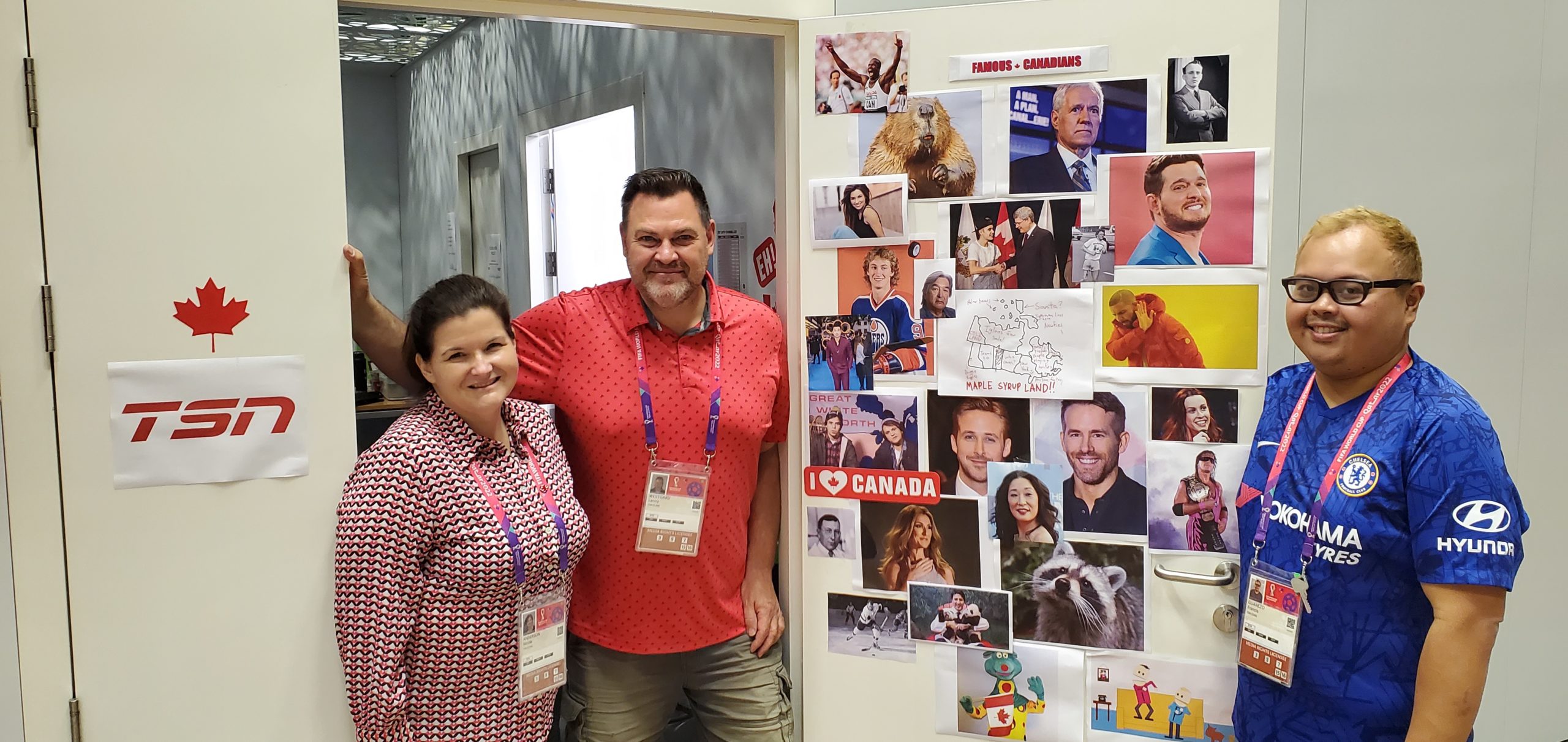Live From FIFA World Cup: TSN Canada’s Team Effort in Qatar Gets Content Ready To Go for Viewers
Production teams learn lessons in Doha with an eye toward 2026
Nearly 50% of Canadians have tuned in for the World Cup on TSN, CTV, and RDS, and, for the team in Qatar, thousands of miles from home, it’s making a difference. “It makes everyone very happy as it’s what we’re aiming for,” says Francis Guanezo, senior engineering technician, Bell Media Network. “We’re becoming a soccer nation, which is fantastic, and there is definitely an appetite from content like this.”

At the TSN office in the World Cup IBC: (from left) Nicole Anderson, senior production manager, TSN; Lanny Westgard, stadium tech manager, TSN; and Francis Guanezo, senior engineering technician, Bell Media Network.
The Canadian team’s office at the IBC is the central point for gathering all HBS feeds and unilateral feeds from the stadium via the VANDA lines. Lawo gear plays a big role in audio and video mixing, and the equipment can be controlled and supported remotely by the team in Toronto. The Canadians are also relying on the 1080i/50-fps feeds from HBS, with standards conversion taking place in Toronto.
“We’re basically at the point where we marry commentary audio with the EBIF and send that back to Toronto so they have a really good static feed they can put to air right away,” says Guanezo. “If for some reason our commentary gets cut out, we can fall back to the EBIF with the HBS commentary, which we can integrate seamlessly.”
The team in Toronto adds in all the graphics, scores, and bugs, and return lines are sent to a team located at a studio at the Souq Waqif in Doha for production of on-camera replays and other content.
The 2026 World Cup will give Canadian rightsholders a chance to be in the thick of things, given that Canada will host some matches. And Guanezo expects lessons learned here to be applied to those games in North America.
“We will also have newer technology that we can leverage so that we can be anywhere and use any of our resources as it’s going to be a big continental tournament,” says Guanezo. “That’s a logistical challenge in itself, but I think we’ll be ready.”
Some of the takeaways from Qatar?
“Video over IP is fantastic,” he says. “We have a 10-Gbps circuit through our third-party partner, which is Ooredoo [for local circuits], and we use Aldea Vivaro Media. They basically delivered two paths for us: a 10-Gig pipe goes through London, and another through Frankfurt with a hitless switch so our viewers won’t even notice that we’ve transferred over to the other circuit.”
Guanezo also credits an in-house engineer in Toronto, Sean Cocoran, with creating an in-house app that controls the Blackmagic Design router. “It’s fantastic because we don’t even have to punch buttons. We just go to a website and route it for ourselves. It saves a ton of time when troubleshooting. We’re the boots on the ground, but Sean is one member of our fantastic engineering team back home.”
The HBS feeds are making a big difference for the Canadian World Cup coverage. According to Guanezo, a feed can be locked off for production, and then the technical team can focus on other things.
“There are a multitude of options from HBS,” he says. “We’re excited about how they’re offering the cloud and the SRT router option now, which means that, at some point, if we have to expand more feeds back to Toronto, we can have assignment editors and the production team do their own thing.”
